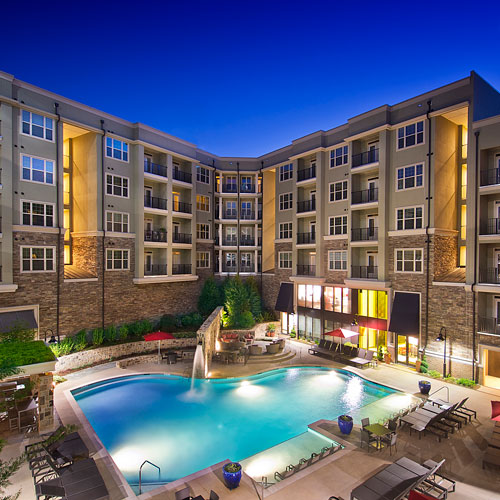For someone in John Cannon’s position, it doesn’t get much more exciting than it’s about to. As the senior vice president of management and construction for Urstadt Biddle Properties Inc. (UB Properties), a real estate investment trust (REIT) focused on grocery-anchored shopping centers and based in Greenwich, Connecticut, he’s heading up a major modernization effort that will see the incorporation of a host of cutting-edge technologies into the company’s 60-plus properties. (UB Properties currently owns 60, manages 9 more, and owns and manages 10 land leases.) “We’re literally on the cusp of these new technologies that we’ve been pilot testing and eventually rolling out,” Cannon says.
In addition to saving the company and its shareholders significant amounts of money, the initiative will reduce UB Properties’ carbon footprint. “As some of the largest consumers of electricity, not reducing our carbon footprint is not acceptable,” Cannon says. “It’s what’s required as a good custodian of these community properties.”
To kick off the effort, Cannon and his team have focused on their company’s trophy property: the Ridgeway Shopping Center in Stamford, Connecticut, a 350,000-square-foot center anchored by tenants such as Bed Bath & Beyond, Marshalls, LA Fitness, and Staples. Here’s a look at the innovative, sustainable features going into that location and others.

1. Photovoltaic arrays
A few years before Cannon’s arrival, UB Properties began equipping its sites with photovoltaic arrays (PVAs) that both generate electricity and feed it back into the grid. The company conducted its first installation at a shopping center near Wayne and Emerson, New Jersey, and it got Ridgeway’s PVA system up and running earlier this year.
UB Properties actually makes money through its collection and distribution of energy. “In addition to revenues generated [by] the sale of power, approximately $0.15 per kWh,” Cannon says, “[UB Properties] also gets ZREC [Zero Emission Renewable Energy Credits] income for 13 and a half years that will be sold at about the same amount.” Stored electricity is also used to run the parking lot lights of UB Properties’ locations at night. “So, right away, there is reduced consumption,” Cannon says.
Although the data has not yet come in, it’s projected that the yearly savings at Ridgeway will be close to $9,000. For UB Properties’ entire portfolio, which will be fully outfitted with PVA systems by spring 2015, annual savings are projected to exceed $300,000.
2. EV Charging Stations
UB Properties also has the opportunity to feed the stored energy from its PVAs into charging stations for electric cars. Last year, the company installed 18 freestanding stations in its shopping center parking lots, the first one opening in October 2014 at Ridgeway. “[Besides ours,] there are very few, if any, grocery-anchored tenants with charging stations,” Cannon says.
And, in partnership with its charging-station group, UB Properties recently rolled out its first electric company van, which uses the stored energy from the PVAs for power, further reducing the company’s carbon footprint. Cannon hopes to eventually have a fleet of electric company vehicles.
3. LED Lighting
Last year, Cannon completed a pilot program for LED light fixtures at Ridgeway. This year, the company will start retrofitting all the center’s parking lots with LEDs. Cannon’s ultimate goal is to change out all the fixtures at UB Properties’ more than 55 shopping centers. “It isn’t just a technology change; it’s an investment that has a high yield of return,” Cannon says. “In less than 24 months, you start to make money on the consumption side with a reduced bill every month.”
The projected yearly reduction in electricity costs at Ridgeway is estimated at more than $14,000. Cannon also installed LED lighting in the parking lots of the UB Properties’ home office, and over the course of a single year, it saved almost $2,000 in electricity. “Think about the savings over 10 years,” Cannon says, adding that LED lighting also requires limited maintenance and offers reduced cooling. “Over the next 8–10 years, we don’t have to touch these fixtures.”
4. Cool roofs
Available in a variety of materials, cool roofs are essentially white roofs that reflect light back into the atmosphere, limiting solar heat gain. Rooftop mechanical systems can also be painted and shrouded in reflective material, helping them run cooler and thus saving electricity.
UB Properties has a number of cool roofs already and hopes to install many more, but it’s the cool-roof system above LA Fitness at Ridgeway—approximately 40,000 square feet of the center’s 800,000-square-foot roof—that Cannon and his team have used to study the effects of cooling in terms of cost. “Savings numbers can be anywhere from zero percent in the winter months up to 80 percent in midsummer,” he says.
5. Carbon nanotubes
Rooftop mechanical systems can benefit from this innovative technology that allows heat dissipation to occur at a rate “three to four times faster than it normally would be,” Cannon says. “The product is like a paint, but it has these carbon nanotubes in it, which are almost like air pockets.”
UB Properties asked its LED-fixtures vendor to test out nanotubes on a smaller shopping center—with seven four-ton mechanical units—to get a sense of how they reduce power consumption. For UB Properties’ locations, Cannon’s plan is to skip the pilot phase and roll out a full-blown installation initiative this year, beginning at Ridgeway. The company’s rooftop units are bigger—20–30 tons each—but by using the carbon nanotube technology, UB Properties won’t have to replace the units, “which would be $50,000–60,000 apiece,” Cannon says. The nanotubes are projected to save Ridgeway $5,000 in the first year alone.
6. Geosolar roadways
Removing ice and snow in parking lots is a “never-ending battle,” Cannon says, so UB Properties has been considering using cutting-edge geosolar roadways. They’re essentially large glass solar plates that are inserted into the pavement, where they harness electricity from the sun and store it to generate heat and melt snow. The linked plates also provide traction to help reduce falls, can tolerate the weight of a tank, and can be illuminated and used as directional lights. Cannon and his team are looking to install the technology within the year.



